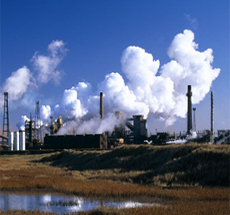General
Childhood cancer report highlights urgent need to reduce toxins.
 Today’s guest blog post comes from the APHA Environment Section’s Children’s Environmental Health Committee.
Today’s guest blog post comes from the APHA Environment Section’s Children’s Environmental Health Committee.
Childhood cancer is the top disease-related cause of death for children and the No. 2 cause overall.
With a 34% increase in childhood cancers since 1975, and a growing consensus among cancer researchers and environmental health specialists that most of these cases are preventable, it’s time to take action.
This month, for Childhood Cancer Awareness Month, the Childhood Cancer Prevention Initiative released “Childhood Cancer: Cross-Sector Strategies for Prevention,” a new report from a team of over 60 stakeholders and leaders in the health, science, business, policy and advocacy sectors.
The initiative’s goal is to eradicate nongenetic childhood cancers through a dramatic reduction in the use and emissions of toxic chemicals linked to those cancers. This new report outlines the way forward.
Since many cancer-related exposures are beyond an individual’s control, the most important way to address this problem is through collective action, including effective chemical regulation, learning more about the problem and speaking out for children’s health.
In 2019, APHA’s report “Protecting the Health of Children: A National Snapshot of Environmental Health Services” found that little is done on the state or federal levels to support parents and health care providers in protecting children from environmental exposures. It remains more important than ever to focus on national policies that protect children.
Parents and health professionals should advocate for equitable implementation of the national Clean Air Act, the amended 2016 Toxic Substances Control Act and other foundational environmental health laws.
But even in the absence of adequate governmental and industry action to protect children, there are steps parents, health care providers and educators can take to minimize harmful exposures and reduce risks for childhood cancer or other acute and chronic diseases.
- Avoid pesticides: Focus on prevention (nonchemical strategies) first, then start with the least-toxic options. Eliminate landscape pesticide and fertilizer use. Do not use pesticides inside or on pets, and dispose of toxic chemicals safely. Use only safe cleaning, sanitizing and disinfection agents. Safely disinfect for coronavirus.
- Eat healthy foods: Reduce exposure to pesticides by choosing organic produce when possible. If your budget is limited, consider prioritizing your organic produce purchases by consulting the Environmental Working Group's Dirty Dozen list, Pesticide Action Network or Consumer Reports. Wash all produce thoroughly. Whenever possible, avoid processed, charred or well-done meat.
- Remove shoes: Take off your shoes before entering the home, and if exposed to chemicals, wash your work clothes separately from family laundry.
- Filter water and store food and water safely: Try to filter your home tap water, preferably with a reverse osmosis filter, and store it in stainless steel or glass containers. Microwave food and beverages in ceramic or glass, not plastic. Cook in stainless steel, cast iron or Pyrex, and avoid Teflon. Also avoid canned goods with linings that are not BPA-free, and avoid storing and consuming food and beverages in plastics marked with Nos. 1, 3, 6 or 7.
- Buy furnishings wisely: Make informed choices about purchases by consulting the Consumer Product Information Database. Foam items bought before 2005 should be inspected; anything ripped or breaking down should be replaced. Be careful when removing old carpeting and padding. Inquire about use of chemical flame retardants. Consider using a HEPA filter on vacuums.
- Reduce air pollution by reducing fuel use: Cut down on fossil fuel consumption by turning off lights, driving a fuel-efficient car, taking public transportation and walking and biking when possible.
- Avoid tobacco products, including e-cigarettes: Don’t allow smoking in the home and in automobiles, even when children are not present. For quitting resources, visit CDC today.
- Limit radiation: Check home radon levels every two years and mitigate if necessary, and weigh risks of medical tests against diagnostic benefits.
- Wear sunscreen: Wear both protective coverings and sunscreen. Find tips for safer sunscreen use at the Children’s Environmental Health Network.
- Speak out: Take steps to protect the children in your life, but also add your voice to the collective so that, together, we can achieve transformative systems change.
Learn more about the Childhood Cancer Prevention Initiative, and read APHA’s 2017 policy statement on “Protecting Children’s Environmental Health: A Comprehensive Framework.”


